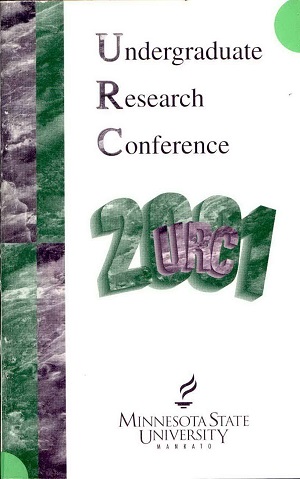Removal of the By-Product Tributyltin Chloride from Reaction Mixtures
Location
CSU
Student's Major
Chemistry and Geology
Student's College
Science, Engineering and Technology
Mentor's Name
Brian Groh
Mentor's Department
Chemistry and Geology
Mentor's College
Science, Engineering and Technology
Description
Tributyltin chloride (C4H9)3SnCI is a troublesome by-product formed in many reactions and is difficult to remove. Current laboratory techniques for the removal of tributyltin chloride from organic by-products are either ineffective or costly. This project's objective is to develop an efficient and cost-effective method to remove tributyltin chloride from organic reaction mixtures. We studied the affects of a variety of fluoride ion sources (KF, KHF2, NH4F) and reaction solvents (hexane, ether and tetrahydrofuran) in the presence or absence of sodium bicarbonate Results indicate that treatment of the reaction mixture with potassium fluoride in the presence of sodium bicarbonate and a nonpolar solvent is the best method. This process converts (C4H9)3SnCI, a liquid, into (C4H9)3SnF, a solid, which may be removed by simple filtration.
PhCOCH2CH, + (C4H9)3SnCl + F (C4H9)3SnF + PhCOCH2CH3
The recovered precipitate, Bu3SnF, may easily be transformed into (C4H9)3SnCl, a useful starting material, rather than be discarded as a hazardous waste. This recycling process for the removal of tributyltin chloride by products may have research and industrial scale applications.
Removal of the By-Product Tributyltin Chloride from Reaction Mixtures
CSU
Tributyltin chloride (C4H9)3SnCI is a troublesome by-product formed in many reactions and is difficult to remove. Current laboratory techniques for the removal of tributyltin chloride from organic by-products are either ineffective or costly. This project's objective is to develop an efficient and cost-effective method to remove tributyltin chloride from organic reaction mixtures. We studied the affects of a variety of fluoride ion sources (KF, KHF2, NH4F) and reaction solvents (hexane, ether and tetrahydrofuran) in the presence or absence of sodium bicarbonate Results indicate that treatment of the reaction mixture with potassium fluoride in the presence of sodium bicarbonate and a nonpolar solvent is the best method. This process converts (C4H9)3SnCI, a liquid, into (C4H9)3SnF, a solid, which may be removed by simple filtration.
PhCOCH2CH, + (C4H9)3SnCl + F (C4H9)3SnF + PhCOCH2CH3
The recovered precipitate, Bu3SnF, may easily be transformed into (C4H9)3SnCl, a useful starting material, rather than be discarded as a hazardous waste. This recycling process for the removal of tributyltin chloride by products may have research and industrial scale applications.



